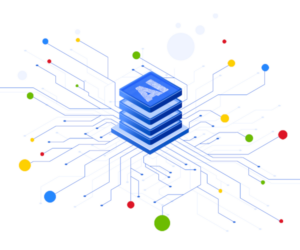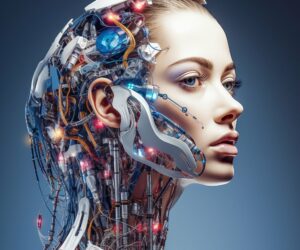In this blog post, we will explore the economic case for generative AI and foundation models, as discussed in an article by Andreessen Horowitz. We will delve into the economic potential of generative AI, its impact on traditional AI, and what this means for the industry.
Generative AI and foundation models have the potential to transform various industries and drive significant economic growth. In recent years, we have seen a new wave of AI applications built on top of or incorporating large foundation models, commonly referred to as generative AI. This post will explore the economic potential of generative AI, its impact on traditional AI, and the transformative effects on various industries.
Definition: Generative AI and Foundation Models
Generative AI refers to a subset of artificial intelligence that focuses on creating new data or content based on existing data. This is achieved through the use of machine learning algorithms, specifically deep learning techniques, that can generate outputs such as text, images, audio, or video. Generative AI models learn patterns and structures from the input data and can then generate new, original content that resembles the training data.
Foundation models are a type of generative AI model characterized by their large scale and ability to perform multiple tasks. These models are trained on vast amounts of diverse and unstructured data, allowing them to learn a wide range of patterns and relationships. Foundation models are often pre-trained on general tasks and can be fine-tuned for specific applications, making them highly versatile and adaptable. Here’s a list of foundation models and examples including OpenAI’s GPT-3 and Google’s BERT, which have been used for natural language processing, image generation, and more.
What’s the difference between generative ai and ai?
In essence, generative AI is a specialized area within the broader field of AI. While AI encompasses a wide range of capabilities and applications, including both generative and non-generative tasks, generative AI specifically addresses the creation of new and unique content based on learned patterns and structures.
For example, developers might create a traditional AI system programmed to classify images as either cats or dogs based on pre-defined features. In contrast, developers working on generative AI could train a model to create new, realistic images of cats and dogs based on existing examples it has seen during its training process.
The Economics of Traditional AI
Traditional AI has typically been difficult for startups to use as a core differentiator due to the complexity of the problems they need to solve. These companies often steer towards harder, grittier, and more complex problems or become services companies building bespoke solutions. However, with the advent of generative AI and foundation models, this landscape is changing.
Generative AI and Foundation Models
Generative AI applications are built using foundation models, which are expansive artificial neural networks inspired by the billions of neurons connected in the human brain. These models can process extremely large and varied sets of unstructured data and perform more than one task and they have specific purposes. The economic potential of generative AI is estimated to generate $2.6 trillion to $4.4 trillion in value across industries.
What is an example of a generative ai model?
An example of a generative AI model for text is OpenAI’s ChatGPT. ChatGPT stands for “Chat Generative Pre-Trained Transformer” and is a language model that generates human-like text in a conversational manner. It is an extrapolation of a class of machine learning Natural Language Processing models known as Large Language Models (LLMs). LLMs digest vast quantities of text data and infer relationships between words within the text.
ChatGPT is based on the GPT-3 architecture, which uses deep learning techniques such as neural networks and is trained on large datasets of examples. Once trained, these models can generate new data, such as text, that is similar in style and structure to the training data. ChatGPT can generate coherent and contextually relevant responses to prompts, making it suitable for various applications.
Some use cases of ChatGPT include:
- Generating human-like text that mimics the style and structure of the input data.
- Generating a response to a given prompt or input text.
- Writing summaries for long-form articles.
- Developing content ideas based on SEO keywords.
- Translating text.
- Assisting in code completion and optimization for developers.
- Predicting demand for specific products and services to optimize supply chain operations.
In what concerns these use cases, it is important to note that ChatGPT, like other generative AI models, has its limitations. These models lack common sense reasoning ability, which can limit their ability to handle complexity, nuance, and questions around emotions, values, beliefs, and abstract concepts. Despite these limitations, generative AI models like ChatGPT can be powerful tools when used thoughtfully and with an understanding of their features and limitations.

The Transformative Impact of Generative AI
Generative AI has the potential to revolutionize various industries, from content creation and entertainment to healthcare and finance. Businesses can save costs by automating content creation and reducing the need for human labor, leading to increased productivity and improved efficiency. Additionally, generative AI can enable businesses to create personalized content and experiences for their customers, further driving economic growth.
Real-World Applications of Generative AI
Generative AI has a wide variety of applications that are useful to different industries and business functions and parameters for specific purposes. Some of these applications include ai research such as:
1. Content creation:
Generative AI can be used to create original text, images, videos, and audio content, enabling businesses to automate content generation processes and save time and resources.
2. Chatbots and virtual assistants:
Generative AI can generate responses to user input in the form of natural language, making it an ideal technology for chatbots and virtual assistants designed to provide information, answer questions, or perform tasks.
3. Drug discovery:
Generative AI can systematically discover new drugs and materials, with the potential to increase sales productivity by approximately 3 to 5 percent of current global sales.
4. Automated game testing:
Generative programming tools can be used to automate game testing, such as identifying bugs and glitches, and providing feedback on gameplay.
Challenges and Guidelines for Generative AI Adoption
While generative AI offers many benefits, it also poses several challenges that companies must overcome. Some of the most significant challenges include:
- Incorporating AI into existing workflows and processes: Companies need to find ways to integrate generative AI into their current operations without disrupting existing processes.
- Handling technical complexity: Generative AI models may contain billions or even trillions of parameters, making them a complex undertaking for the typical business.
- Lack of trained personnel: The technology is still relatively new, and there may be a shortage of skilled professionals who can work with generative AI.
- Data security: Ensuring the security and privacy of data used in generative AI models is crucial, as these models often require access to large amounts of sensitive information.
- Addressing biases, errors, and limitations: Generative AI models can sometimes generate unrealistic outputs or reproduce biases present in the training data, which can lead to unintended consequences or parameters.
By understanding and addressing these challenges, businesses can successfully adopt generative AI and harness its full potential.
Conclusion
Generative AI and foundation models are poised to have a transformative and overwhelming impact on various industries, driving significant economic growth. As these technologies continue to evolve, businesses and industries must adapt to harness their full potential. By understanding the economic case for generative AI and Foundation models for decision making that can better prepare for the future and capitalize on the opportunities they present.








